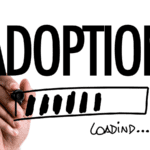Go With the Flow of Data Cleaning Part 2 – Planning for Data Quality

Bad CRM data can compound exponentially, impacting marketing and business development. It’s essential to understand the scope of your data problems and follow a plan for regular data cleaning.
Your Plan Is Your Life Preserver
Once you’ve prioritized subsets or segments of contacts, identifying and prioritizing your most common data errors can help you decide on the best way to tackle ongoing data cleaning. For example, if you have an important email that needs to be sent to clients, you need to focus on email addresses. Identify records that don’t have an email address, have incorrectly formatted email addresses or have bounced recently. Additionally, if there are contacts you haven’t sent a communication or invitation to for an extended period of time, it’s entirely likely that their email may no longer be valid. It’s important to regularly test emails on your lists because not doing so can cause you to be blacklisted by anti-spam entities or have your account blocked by your eMarketing provider.
Initial Cleaning Cycle
The best place to start your data cleaning cycle is with a contact and list verification and cleansing service such as TrueDQ. This service will evaluate your list data, identify potentially harmful “honeypot” email addresses and even automatically update many of your contacts with current, complete contact information. The data can then also be enhanced with additional missing information, such as industries and locations, to help with targeting and segmenting.
Rinse and Repeat
When one segment or list has been cleaned, move on to the next one – bearing in mind that what’s important on the next list may be different from the last one. For example, maybe you need to send a hard copy postal mailing, so it will be important to ensure the accuracy of physical mailing addresses rather than email addresses.
Bounces and Returns
One of the most common data quality failures at law and other professional services firms is ignoring bounced emails and returned hard copy mailings. Bounces and returns are real-time indicators that can help you keep on top of your data quality. Researching and correcting them is important because sometimes they involve important former Clients who could potentially hire the firm again at their new company.
Returned hard mail will often include the forwarding address of the recipient, which should be corrected in your CRM. For emails, use a central email address to collect automatic email replies, since these frequently tell you when a recipient no longer works at an organization.
Ideally data stewards should regularly review all bounces to take the onus off the professionals. However, it can also be helpful to generate reports on bounced communications and circulate them to professionals or their assistants who may be able to provide updated information – or will at least appreciate knowing which of their contacts have moved on or changed roles. Finally, if your eMarketing and/or CRM system has a process for automatically isolating bounced records, be sure you have a reciprocal process that automatically reinstates bounced records when the email field is updated.
Prevent Invalid Data
There are multiple ways to encourage good data habits, depending on your system and method of contact entry. If your firm relies on manual data entry, implement a firmwide Data Standards Guide to inform users how data should be entered (e.g., does your firm spell out or abbreviate job titles?). It can also be helpful to use system validation rules wherever possible to require certain information in new records such as last name, city and email address to ensure your contacts are relevant.
Finally, regularly review newly added records for consistency and completeness. This process can reveal issues such as users who may require additional training on contact input best practices. It can also help to catch spam or other potentially dangerous entries that can sometimes flow into your database from online forms that are filled out by bots.
Never, Ever Stop
Just as rivers keep flowing, so does the data in your CRM system – and the data will always need cleaning to ensure that it is fresh. While this may feel like a relentless and burdensome task, never stop – just go with the flow – because when you’re not regularly cleaning the data, your CRM “river” can become stagnant, and the more polluted it becomes, the longer the eventual cleanup will take.
Read Go with the Flow of Data Cleaning Part 1- Don’t Drown in Bad Data
For more than a decade, the team at CLIENTSFirst Consulting has been helping professional services firms and other organizations successfully select and implement CRM and eMarketing systems to maximize value, adoption and return on investment. If you need help achieving CRM Success, please contact us at 404-249-9914 or Info@ClientsFirstConsulting.com.







